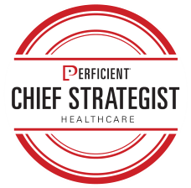The trend of treating information, content, and knowledge as assets means that ultimately these things need to be addressed and accounted for just like all other assets in a business. This means making it a part of the organization’s balance sheet – if not formally, as accounting principles do not yet support this capitalization concept – then virtually.
 Research firm Gartner has labeled this idea of truly and literally accounting for information as an asset as “Infonomics” and encourages organizations to apply asset management practices and principles to the information. While there is not yet a label for monetizing content and knowledge, it is not difficult to imagine there soon will be.
Research firm Gartner has labeled this idea of truly and literally accounting for information as an asset as “Infonomics” and encourages organizations to apply asset management practices and principles to the information. While there is not yet a label for monetizing content and knowledge, it is not difficult to imagine there soon will be.
Forrester recognizes that improved content and knowledge management models make marketing, sales, and service-related content and knowledge more accurate, on-brand, and reusable. The research firm cites “Your Brand Needs Content Governance Now” as means to control content and knowledge assets that play a critical role in consumer touch points and personalized and contextualized experiences.
From a governance perspective, recognizing information, content, and knowledge as assets is a critical distinction that will influence how governance is applied. Information is becoming more than just data used to carry out internal processes and procedures, and content and knowledge are becoming more than just a collection of copy, images, and videos assembled in different media and delivered across channels.
More and more healthcare organizations are realizing the potential for monetizing the information, content and knowledge itself. This monetization can take many forms, the most obvious of which is the actual packaging and selling (or providing access through APIs) of the information, content and knowledge itself, as well as leveraging these assets in the development of new services and products, improving patient and member experiences, or even providing insights into new or different business and operating models.
Forrester Research refers to this new emerging approach to governing information as “DG 2.0” and encourages organizations to evolve their programs to account for this valuation of information. At a minimum, this includes obtaining the involvement of business executives beyond just those areas concerned with regulatory or technical requirements.
Healthcare organizations need to consider the re-structuring and repositioning of the governance program to ensure it is held accountable for addressing and realizing the business value and that it ensures the appropriate disposal of non-valued information, content and knowledge.
This blog was co-authored by Mark Steinbacher and Priyal Patel.
To learn more about the rebirth of governance in healthcare, and exploring the trends and impact on patients and organizational operations, you can download the guide below.

